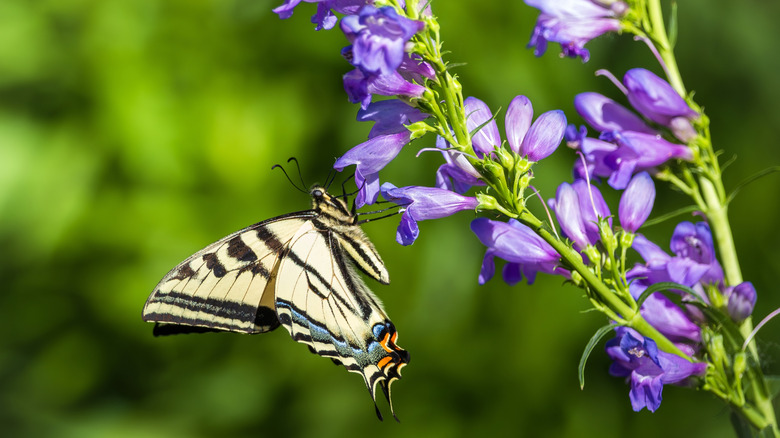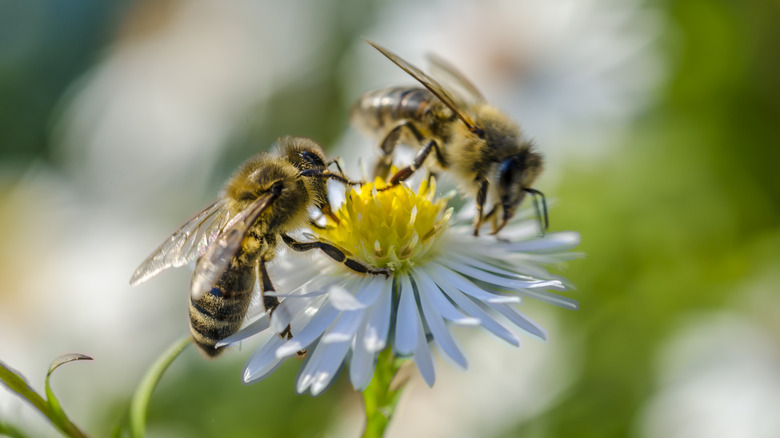The Placement Mistake You're Making With Plants That Attract Pollinators
Pollinators come in a variety of forms, from buzzing yellow bees to eye-catching butterflies to even less commonly thought of animals like birds and bats. Regardless of type, pollinators can elevate your garden's appearance, adding color and life, all while helping your plants thrive. As a result, you may find yourself creating a garden specifically to attract them, taking the time to research and cultivate their favorite plants, as well as avoiding common mistakes that deter pollinators. However, as beneficial as they are, it's also important to consider the usage of your yard when attracting pollinators.
Although not all bees sting, it is a common fear that many people share. This is especially true if you have a visitor with an allergy, in which a bee sting can pose a dangerous threat. While you may still want to invite bees to your garden, placing your bee-attracting flowers in high-traffic areas like walkways or near outdoor spaces can be a mistake that reduces the comfort of your yard. However, this doesn't mean you have to leave these areas bland and without bloom. Instead, careful planning for your plants' placement can help attract more pollinators to your yard while creating a space humans and wildlife alike can enjoy.
Save bee-attracting plants for low-traffic areas of your yard
To avoid this pollinator placement mistake, before adding your plants, divide each part of your yard into one of two categories: high traffic or low traffic. High traffic areas are the spots where you and your guests may visit frequently, such as patios or decks, pools, gardens, or walkways — any area that receives regular use. Low traffic areas may still be visited, but less often.
Low traffic spots can be a great place to start a pollinator garden for all animals, bees included. Since these areas are away from your favorite spots, there's less concern about bees and other pollinators mingling with you or your guests. For high-traffic areas around your yard, you may want to choose plants and flowers that are less enticing to your bee friends. Overall, bees are most drawn to open flowers where they can see the pollen, as well as brightly colored blooms with a notable fragrance. By straying away from these options but still offering nectar-producing flowers, you can create a yard that doesn't harm bees but focuses more on attracting other pollinators. Examples of flowers you may want to use in high-traffic areas include ones with dense petals and less pollen, flowers that bloom in colors outside a bee's vision, and ones with less fragrance.
Remember, careful placement won't keep bees out entirely, since they visit a wide variety of flowers. However, if you're worried about them spending time in the areas you visit most, this can be a helpful tactic to provide them with their own space.

